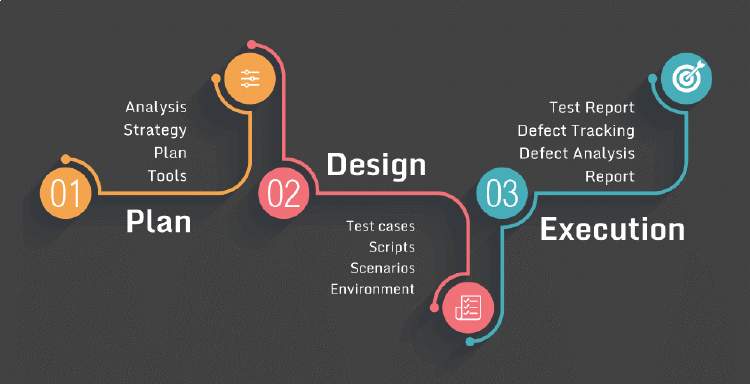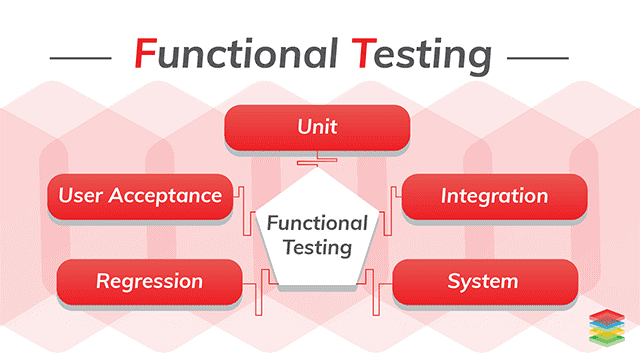What comes to your mind when you hear the word software testing?
Do you think of it as a particular term like functional or regression testing, or do you visualize the scenario of complicated tests that you’ll have to execute in the world of software testing?

If you’re the second type of person, then you know that software or web app testing is not a singular approach, it involves everything from functional tests to cross-browser compatibility testing to analyze whether an application works as expected or it behaves differently in the real-world scenarios. Technically, software testing is performed to ensure that all the features of your application are running smoothly without any interference.
Still, it’s not that easy to perform software testing – you have to write appropriate test cases that cover all the features and functionalities of your web app, address issues related to user experience, decide what to automate and what to test manually, and so on. Although organizations that prefer to rely more on manual testing will never be able to leverage the power of automation to improve their testing process.
So, what are the best practices that an organization should adopt for a successful testing process? Is it implementing modern development practices in the process, or staying with the traditional methods?
In this article, we have highlighted some of the best practices for a successful testing process of your project.
Page Contents
Cultivate a Testing Culture
The most crucial element of a successful testing process is implementing a testing culture in your organization. Most developers often assume quality assurance as to the last phase of software development, but in actual, it is just a normal step in the ongoing process of agile software development. Therefore, you need to promote a testing culture in your organization for better testing processes. Here’s how you can do it:
Make Testing a Team Effort
Software testing should always be treated as a team effort; you must keep everyone in the loop from the beginning that will help you save enough time down the line. You’ll have to ensure that people involved in the project have a clear understanding of the application. When every person understands the application, it makes it easier for testers to execute the test cases. Also, communicate with the testing team regularly and involve them in decision-making meetings.
Be Clear about Bugs
It’s the bugs that make the testing process over complicated because testers create multiple bug reports and request for more information from developers, which often becomes the reason for overhead thinking. Instead of creating multiple bug reports, ask your testers to create a good bug report that will help you save time.
Execute Testing Throughout the Software Development Lifecycle
One common mistake made by every organization is testing their web app at the QA stage only, which is not an ideal approach. Testing should be carried out at every stage of the development process to ensure that newly added features are in accordance with the application. Also, if you test early, you’ll be able to find bugs early and then eliminate them quickly. It will not only improve the quality of software but also cut labor costs in the final stage of QA while reducing the maintenance costs as well.
Use DevOps Shift-Left Practice
When developers and testers work in complete tandem with each other, they are able to achieve maximum communication and unified integration to provide a better testing environment. It improves the quality of the test as well as reduces communication disputes, and highlight any missed details.
Enforce Flexible Testing Process
Every software has different testing requirements, and thus require different testing efforts. Therefore, you need to customize the testing process to create an automated workflow. Also, make sure that the process is repeatable and allow further requirements and optimization in the future. Defining the testing process along with the workflow will allow to you foster a testing environment in your organization.
Experienced Staff
Organizations that heavily rely on the testing process must have a staff of IT engineers who can code at some level, even if just scripting. It is vital for a successful testing process because it makes it easy for developers to communicate with testers during the software development process, but businesses that have adapted manual testing often find it challenging. In such cases, organizations prefer to start building the proper structure with new applications and eliminate old approaches over time, rather than training manual testers to move into a strategy.
When individuals in the delivery chain, monitoring production and providing infrastructure come together with the QA, they are more capable of choosing the right automation approach for the delivery chain, and how it can be implemented. Apart from that, they can also identify the ideal chatbots and monitoring tools that will be beneficial for everyone.
Testing Workflow

Your aim in software development lifecycle should be mitigating risk and delivering reliable software, rather than finding more and more bugs. No doubt finding bugs and eliminating them is crucial for a successful testing process, but you should have a proper workflow for your testing environment that can be achieved with the following approaches:
- Divide Tests in Small Fraction
If you’re executing tests frequently throughout the development cycle, you must execute smaller tests that will help you save time as well as resources. Testing software often includes longer test scripts, which can be challenging to execute in minimum time. So, divide the testing process into multiple parts, such as functional testing, UI testing, UX testing, etc.
- Implement Regression Testing
For better test management, you should implement regression testing that helps in quality assurance of software. Regression testing ensures that the recently added code has not affected existing features or functionality of the software.
- Write Tests for Maximum Coverage
You definitely want to cover every aspect of your application testing, so prefer writing tests for everything to cover the maximum. By maximum test coverage, we mean writing tests for valid conditions as well as unexpected conditions that can affect the behavior of your app in the future.
- Use Automation
Automation is much better than manual testing – at least in most cases if not in every scenario. The major benefit of using automation is reducing the time involved in the testing process. As you know, there are multiple tasks involved in testing management that eats a lot of time and resources, as well as it requires writing different test scripts for different tasks. But, automation gives you the freedom to test your application in the minimum time possible and that too with fewer test scripts.
A Legit Process for Functional Testing
Functional testing is the backbone of the entire testing process that ensures each part of your app is working properly. Every software has a purpose to fill, functional testing makes sure that it is capable of doing that. So, you must have a unique approach for functional testing of your application. For instance, you can follow the below process:

- Create test data for identifying inputs
- Analyze the expected outcome based on those inputs
- Run test cases with proper inputs
- Compare the expected outcome with the actual results
If this technique helps you match the expected results with the actual results, then you can rest assure that the software functions properly, and if they don’t match, then there are problems with the application.
Technology
If you move to automation to improve the testing process, then it is necessary to know that automation doesn’t happen without a great tool. Well, most of the open-source automation tools need to be installed on the system, but a platform like LambdaTest that offer cloud-based automation testing can relieve your testing headaches.
We recommend automation for application testing because it highly impacts the overall testing process. From the testing department to developers, everyone benefits from automation as it helps them run their tests quickly without writing multiple test cases. Also, it makes the cross-browser compatibility testing of web app easier and efficient, which is a crucial factor for any organization.
Conclusion
A successful testing process doesn’t depend on how many tests cases you execute for it or what platform you use to automate it – it largely depends on the testing environment that you have in your organization, and the strategies that you use in the software testing management. Mentioned above are a few practices that you should follow to have successful testing of your software and build better applications.
